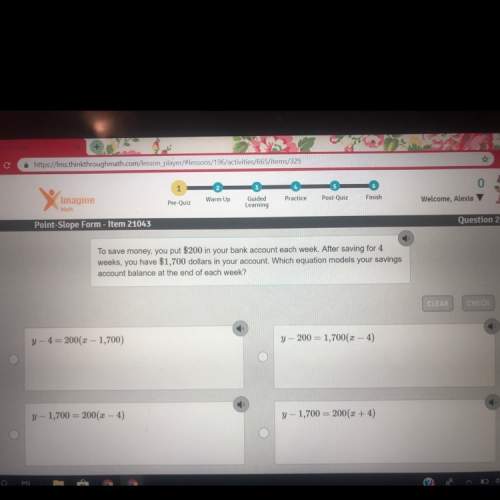
Mathematics, 25.08.2020 21:01 aharvitt0417
Consider these three squares with known area. 3 squares. The smallest square is labeled 25, the next square is 144, and the largest square is 169. Can a right triangle be formed using these squares? Yes, the sum of the two smaller squares does not equal the largest square. Yes, the sum of the two smaller squares equals the largest square. No, the sum of the two smaller squares does not equal the largest square. No, the sum of the two smaller squares equals the largest square.

Answers: 2


Other questions on the subject: Mathematics

Mathematics, 21.06.2019 19:00, breannaasmith1122
Which of the expressions (on the photo document i inserted) together represent all solutions to the following equation? 8cos(12x)+4=-4 *the answer should be in degrees.* > i would like for someone to explain the process to find the solutions for this.
Answers: 2

Mathematics, 21.06.2019 19:30, BaileyElizabethRay
Which graph represents the equation y =4x
Answers: 1


Mathematics, 22.06.2019 00:00, jhenifelix
Cd is the perpendicular bisector of both xy and st, and cy=20. find xy.
Answers: 1
You know the right answer?
Consider these three squares with known area. 3 squares. The smallest square is labeled 25, the next...
Questions in other subjects:



Mathematics, 12.12.2020 16:00







Mathematics, 12.12.2020 16:00




